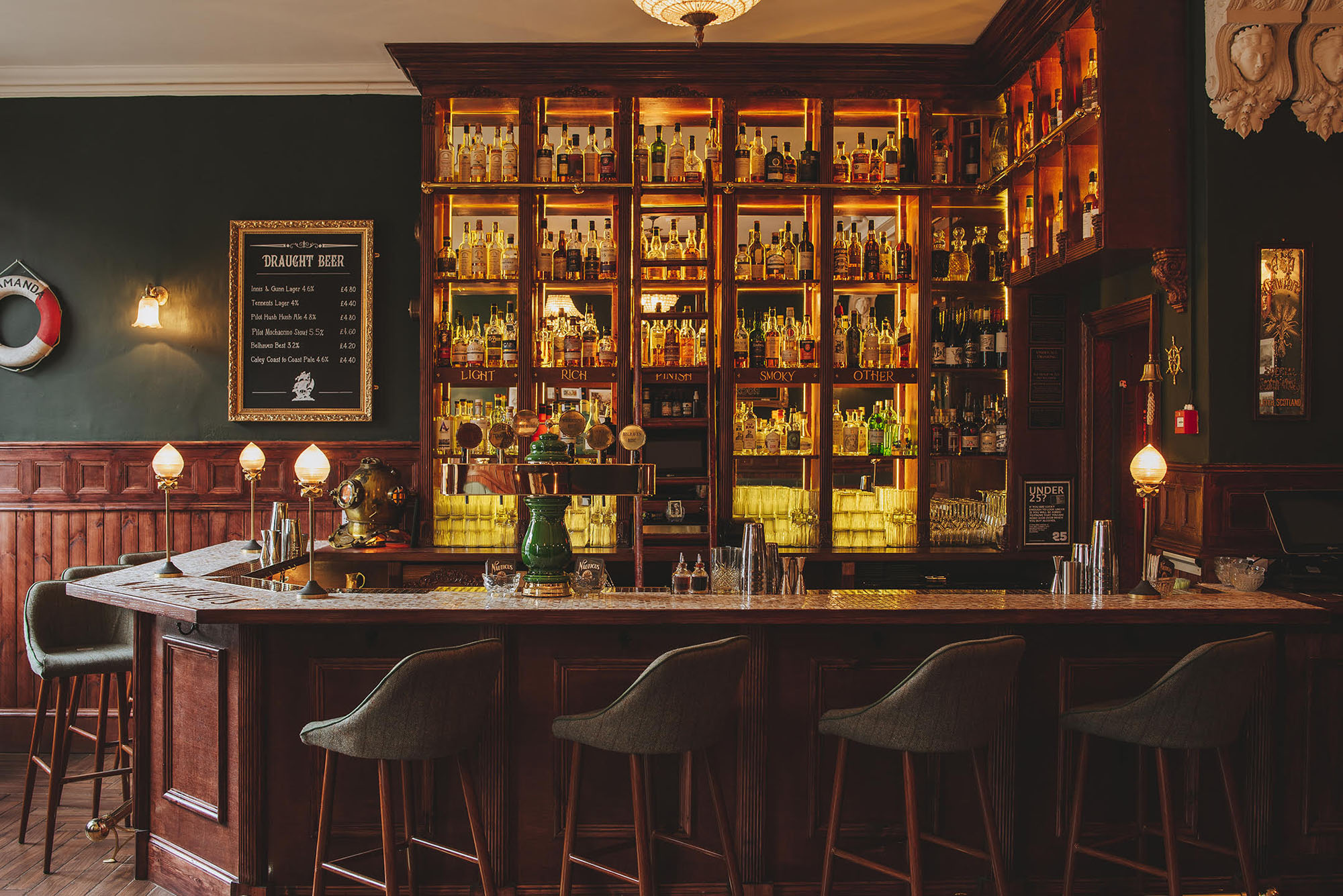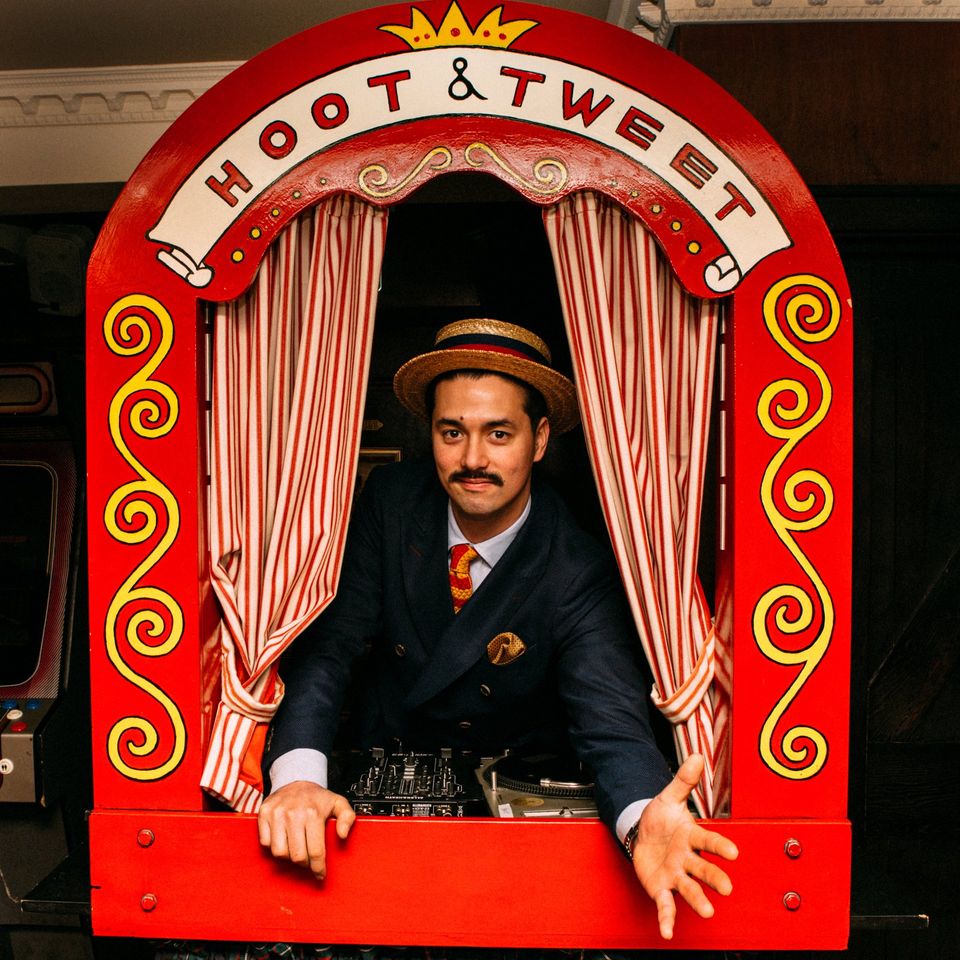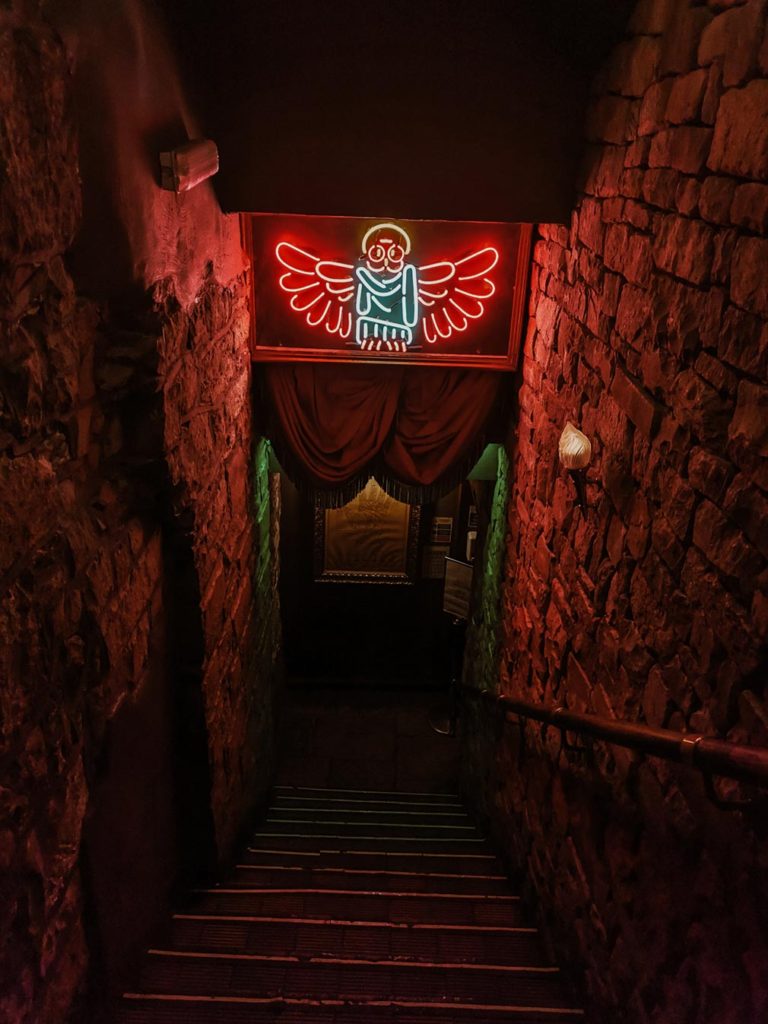Living in Edinburgh, where he owns three bars, one of which is considered among the best in the world. He became famous for his innovative approach to the craft of bartending, developing techniques like switching and sub-zero, all stemming from his love for ice cream production. Get to know the Scottish bar pioneer as we discuss the role of science in the bar world and Scotland’s love for cocktails.
You are the creator and owner of the world-renowned Panda & Sons bar and projects like Hoot the Redeemer and Nauticus. Can you tell us more about them?
Panda & Sons was the first bar I opened, and for the past three years, it’s been among the top 100 bars worldwide. Last year, we made it to the World’s 50 Best list, currently sitting at number 32. In this bar, we’re known for top-notch drink preparation techniques, a décor centered around a panda bear, and our traditional Scottish hospitality. Hoot the Redeemer is our quirky, extraordinary bar. The catalyst for this concept came from my conscious dreams. I gradually learned to jot them down when they were most vivid. We used that and created an “adult funfair.” From alcoholic slushies to alcohol-infused ice cream and playing our arcade machine where you can create your own drink.

Why did you choose to open Panda & Sons and other bars specifically in Edinburgh?
Before opening Panda & Sons, I worked for many years at The Voodoo Rooms. That provided me with a platform to participate in many bartending competitions, build a name, and gather a few successes. I was fortunate to travel the world through those competitions and visited many amazing bars with different concepts and styles. That’s when I realized a gap in the Scottish and global market for what I wanted to do. This gave me the desire to open my own bars. I wanted to focus primarily on quality, innovation, and satisfaction rather than always being profit-driven, as is often the case in bars.

How do Scots react to mixed drinks in a country known for whisky?
We may be a whisky country, but one could argue America is also a bourbon country… Edinburgh’s cocktail scene is very sophisticated and has been at a high level since the turn of the century. We were part of the cocktail renaissance that we now see alongside other major cities like London and New York. Bramble Bar was the catalyst for this whole movement, and it’s great to see they’re still doing amazing things. But back to your question – yes, people simply love our drinks, and generally, residents here have a penchant for cocktails.
Is there a place in the world where you’d open your next bar if given the chance?
I’d like to wrap it up after a few years and return to just one small bar with a small team right here in Edinburgh. But if we’re talking about other cities to open a bar, it would be Mexico City. Everyone I meet there is very friendly, the food is incredible, they have lovely weather, and they also love whisky. It’s a great metropolis that also serves as a base to visit other beautiful parts of Mexico.
As an innovator in the bar world, what does science mean to you in a bar, and how do you use it?
I think science is important to keep pushing the boundaries of cocktail innovation, but it’s not necessarily suitable for every bar. Our guests’ expectations grow each year, but on the other hand, information for bars and bartenders is easily accessible. So, my mission is to provide bars worldwide with new or improved techniques and also promote techniques that haven’t been used before, with a focus on those that don’t use thermal energy. All of this is important to me, and I want to help our industry continue to progress without relying too much on techniques used by chefs. Let’s create our own!
And what about your innovative switching technique? How did you develop it?
The change came about due to my love for research and development. For eisbock beers, an old, primitive technique called freeze concentration is used. The same technique is used for traditional applejacks. So, I tried to create a beer in the style of eisbock. I found that a lot of aroma was lost in the frozen part. So, it occurred to me that if I could remove aroma using this process, why not do the opposite and add aroma? With switching, you can achieve many different interesting combinations, and it’s exciting that it’s a relatively new matter, and any bartender can come up with their “switch” drink and be the first in the world.
Can you give examples of what bartenders can achieve using switching in a drink?
For instance, you can emphasize the taste, increase existing flavors in alcohol or a drink. For our Negroni, we remove a significant portion of water from the gin. We wanted to emphasize its citrus tones, so we added a clarified mix of lemon, orange, and grapefruit. Another great example is taking water out of whisky finished in IPA beer casks, where we swapped water for non-alcoholic IPA, calling it Double IPA whisky.
You can also change the style of an existing drink – for example, in the classic Jungle Bird, we took out water from the rum and replaced it with a clarified mix of pineapple and lime juice. With this “switched” rum, we then treat it like any finished drink, but it has more alcohol. The ingredients are the same, but the drinking style is completely changed. It’s a great approach for most tropical drinks with fruit juices. Texture can be changed as well. For example, we changed the spirit’s texture in a finished coconut Daiquiri. We removed water from the rum and replaced it with coconut milk using clarification, as with Milk Punch, to clarify the coconut.
Where do you draw inspiration from and gather information for your scientific approach to drinks and ingredients?
Every day, I draw inspiration from our amazing industry. There are so many incredible minds that I highly respect. As mentioned, I like to see what others are doing to make sure I’m innovating and doing something different from my peers. One of my main motivations is to lead the trend when kitchen techniques are used. I want new techniques to arise in bars and then be adopted by chefs!
You produce and own an ice cream brand. Does it relate in any way to switching?
The ice creams I produce don’t use this process, but based on my ice cream knowledge, I’ve developed my techniques. I have expertise in ice cream/gelato making. At the University of Reading, I attended “The science of ice cream” course, then continued my education in Bologna, Italy, where I moved for a short while to attend several courses at Carpigiani Gelato University.
Which local ingredients would you always recommend or gift to someone visiting Scotland for the first time?
I think whisky would be an obvious choice, but Scotland has a huge range of local producers of unique and innovative spirits and liqueurs. Under the brand “Buck & Birch,” there are several amazing foragers creating truly great brands. From time to time, I go foraging too. Through our collaboration, my team and I have learned a lot from them about nature and its gifts that can be found in our Scotland.

This isn’t the first time you’ve appeared on the list of the 100 most influential people in the bar industry. How does it feel to be part of the community and know that the entire bar world, in some way, is following you?
It’s an honor to be part of the Bar World 100 since its inception. It’s always nice to represent and highlight your country. I see it as a bonus for everything I do, but I’m not doing it for recognition or awards (although recognition helps bring attention to my work). My motivation is constantly pushing the boundaries of our industry. That’s what gets me out of bed every morning.
As you’re known as an innovator – what continually motivates you and gives you the energy to always take a step forward, and how do you know if it’s the right direction?
For me, the biggest motivation is the knowledge that I’ll never stop learning and improving. I aim for perfection, but nobody will ever be perfect. I always take positives from all my research. Many of my research efforts lead to things that don’t work or aren’t suitable for drinks, but at the end of each experiment, I’ve gained valuable knowledge and understood what I was doing. I think it’s important to set a clear direction of what you want to achieve and where you want to go. Failures and successes are part of the journey.
I’ve seen your interest in NFTs and blockchain. How might that relate to bar culture?
I’m very interested in blockchain and NFTs. I wanted to better understand this rapidly evolving digital world, so especially during the lockdown, I focused on researching it (which is why I wasn’t very active on social media). I also wanted to know what could be done with these skills in our industry. I’ve learned how it could help us in the future; it could potentially be good for people’s finances. We could tokenize our companies, accept cryptocurrencies as payment, turn our bar menus into NFTs, or sell limited prints of the bar as NFTs… I’m also sure that blockchain technology will become more integrated into our industry over time. I hope to do something with this knowledge and use it over the next few years.






